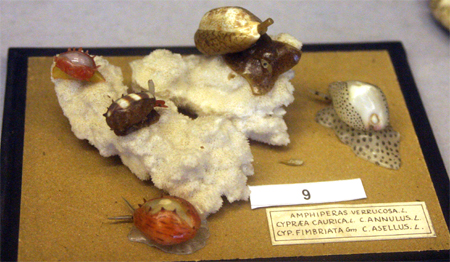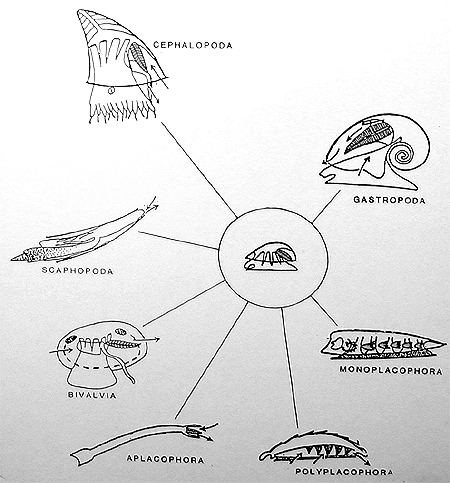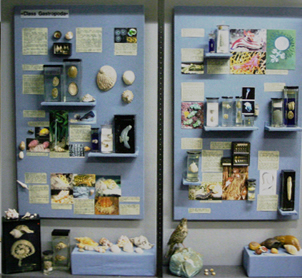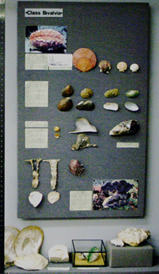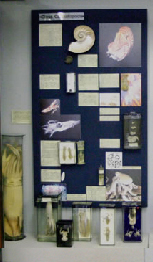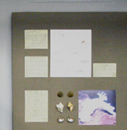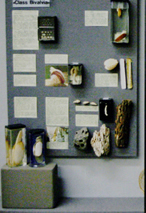
PHYLUM MOLLUSCA
The Phylum Mollusca is one of the three major invertebrate phyla which have successfully evolved on land as well as in the sea, its members are found all over the world - in lowlands, forests, deserts, lakes, rivers and oceans.
Molluscs form the second largest invertebrate group with over 50000 living species and 35000 known fossils. This group includes the familiar slugs, snails, clams, oysters, squids and octopuses and is thought to have evolved from some type of non-segmented flat worm. Despite great differences in form, the molluscs have a unique non-segmented body plan with five basic parts:
- The head, with eyes usually on tentacles;
- The foot, a locomotory organ;
- The visceral mass containing the digestive, excretory, circulatory and reproductive organs;
- The mantle, an epidermal covering that secretes the shell;
- The shell, a calcareous involucre.
The most characteristic feature of a mollusc is the shell, which supports and protects the soft body. The shell is composed of several layers: the horny, outer peri-ostracum, the ostracum (layers of calcium carbonate in a protein framework) and the hypo-ostracum (an inner lining of mother of pearl). Aquatic molluscs respire with gills situated in the mantle cavity. Terrestrial species breathe with an elementary lung.
|
Molluscs have adopted a wide range of feeding habits: some feed on detritus from plant and animal remains; others filter food particles from water; others are herbivores browsing on algae; yet others are carnivorous hunters. The mouth occurs on the lower surface of the head. The pharynx contains the tongue and a radula, a ribbon like organ with rows of recurved, chitinous teeth stretched over a cartilaginous base, which is used to scrape up food. In many molluscs, the radula has been modified for other types of feeding.
Molluscs are either dioecious, with separate sexes, or hermaphroditic, one individual bearing both male and female sex organs. The eggs of aquatic species of bivalves and some species of gastropods develop into trochophores, which in turn usually develop into veliger larvae. Both stages are planktonic and serve for dispersal of the species. The eggs of cephalopods and terrestrial molluscs hatch into tiny replicas of their parents.
The phylum Mollusca is divided into the following seven classes: Monoplacophora, Polyplacophora, Aplacophora, Scaphopoda, Gastropoda, Bivalvia, Cephalopoda. The first two classes are thought to represent primitive molluscs, the last three classes include the great bulk of living species.
|
Our shells
The shells and molluscs in this collection have come from a number of sources. Some were donated by the Museum of Science and Art in the late 19th century. Others were bought from G. B. Sowerby, the Victorian naturalist who was so successful in popularising the collecting of shore animals by the general public that the fauna of rock pools around the British Isles were drastically diminished. Many of the cephalopods were purchased by J. H. Ashworth from a marine institute in Italy. Most of the gastropod and bivalve shells come from a very varied collection of several thousand shells of unknown origin.
|
||||||||||||||||||||||||||||||||||||||||||||||||||||||||||||||||||||||||||||||||||||||||||||||||







